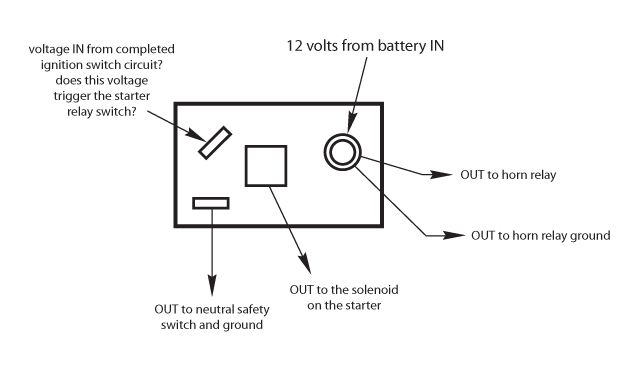mattmatthew
^_^
When key is turned in the ignition, starter won't engage. However, when the key is merely in the ignition, and I manually bypass the relay by connecting the constant 12v line in to the solenoid out, it starts right up.
I replaced the starter relay pretty recently (about a year ago). And I also fully charged the battery a few days ago. I haven't yet eliminated the relay as the problem, as I realize that the stuff being made in China these days is absolute garbage.
But at the same time, I don't want to just start randomly replacing parts. Ideally I'd like to trace the problem back to the source, and fix just the thing that's causing the problem.
(BTW, this is for a slant 6 225 motor, A904 trans.)
Anyway, I'm trying to wrap my head around how all this stuff works. I read some stuff on how relays work. And I'm not the greatest at reading or comprehending lengthy explanations especially when I don't understand the fundamental principles at work (I've already read over a dozen past forum posts on similar subjects).
I drew this diagram based on what I saw under the hood and what the wiring diagrams in the service manual show.
I'd like to know if I got this right.

And if this is right, if I apply battery voltage to the ignition "in", if the relay is working properly it should trigger the relay to allow voltage to the solenoid? And if it's not the relay then it must be the ignition switch?
I replaced the starter relay pretty recently (about a year ago). And I also fully charged the battery a few days ago. I haven't yet eliminated the relay as the problem, as I realize that the stuff being made in China these days is absolute garbage.
But at the same time, I don't want to just start randomly replacing parts. Ideally I'd like to trace the problem back to the source, and fix just the thing that's causing the problem.
(BTW, this is for a slant 6 225 motor, A904 trans.)
Anyway, I'm trying to wrap my head around how all this stuff works. I read some stuff on how relays work. And I'm not the greatest at reading or comprehending lengthy explanations especially when I don't understand the fundamental principles at work (I've already read over a dozen past forum posts on similar subjects).
I drew this diagram based on what I saw under the hood and what the wiring diagrams in the service manual show.
I'd like to know if I got this right.

And if this is right, if I apply battery voltage to the ignition "in", if the relay is working properly it should trigger the relay to allow voltage to the solenoid? And if it's not the relay then it must be the ignition switch?
















